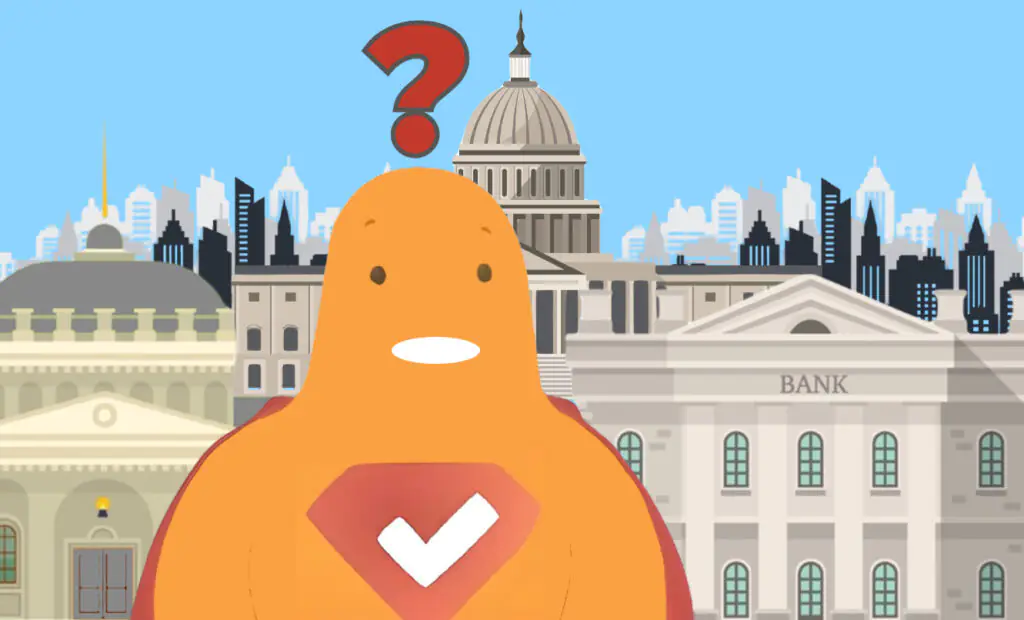Back in 2017, a Kansas City community survey revealed that residents were unhappy with the city’s aging infrastructure. Acting on this, city officials proposed a pricey repair plan. Residents voted in favor, and the plan passed with a clear majority. The resulting $800 million infrastructure repair plan was the largest in the city’s history. So how did the city come to such a big decision? Simple – they just asked the community what they wanted.
In this blog, we’ll look at community surveys, who should be conducting them, and how to go about conducting them.
Create your community survey, poll, or questionnaire now!
What is a Community Survey?
A community survey is a compilation of questions sent out, often through an online survey, to residents within a specific location. The goal is to understand residents’ concerns, attitudes, opinions, experiences, and needs. A successful community survey provides valuable insights into what the people want, thereby aiding in the local decision-making process.
In addition, many community leaders often feel they only hear a subset of opinions from certain people or stakeholders within the community. Community surveys are powerful tools because they can be used to engage everyone within the area, even those who aren’t typically active within the community.
Take, for example, the American Community Survey (ACS). On a large scale, this survey helps officials, leaders, and businesses understand the changes taking place in their communities. The ACS’ annual survey provides vital information on a yearly basis about the country and its people. Information from the survey generates data that helps determine how more than $675 billion in federal and state funds are distributed each year. Through the ACS, community leaders know more about jobs and occupations, educational attainment, veterans, whether people own or rent their homes, and other topics. Public officials, planners, and entrepreneurs use this information to assess the past and plan the future. On a local level, community leaders can emulate this type of survey to gain more insight into their specific location, district, etc.
Who Should Conduct Community Surveys?
Community surveys provide information on the ethnic makeup of the community, its local languages, cultures, and even lifestyles. Of course, community surveys aren’t just about demographics, they also benefit various groups in different ways. Four groups that may use a community survey include:
- Local government offices. Governing bodies and public services rely on surveys to understand the needs of residents so they can come up with policies accordingly, such as in the surveys for community development that Kansas City sent out which we highlighted earlier. These surveys help them understand people’s priorities and allocate budgets. They can also help them understand people’s concerns, such as with a police survey.
- Nonprofits. These organizations may use community surveys to gain an understanding of people’s preferences regarding the issues they wish to support and how they want to extend their support.
- Advocacy groups. These groups may use surveys to learn more about how the community feels about key issues within the area that need to be addressed and solved. Surveys for community resources are also popular with advocacy groups.
- Local businesses. Finally, area businesses may use a community survey as a market research tool, gathering information about how locals feel about their products or services in order to make improvements, tailor their products to specific needs, or expand their offerings.
10 Steps to Conducting Community Surveys
When you conduct a community survey, you want to get high-quality, actionable insights. To get there, you should follow ten steps.
1. Outline Your Goals
What are you hoping to accomplish with your community survey? Do you want to gather information on residents’ experiences, or are you looking for insights into their points of view on a particular issue? Outlining the main purpose of your survey will give you direction and help you streamline the rest of the data collection process. At this stage, you’ll also want to determine what is an acceptable sample size.
2. Set Benchmarks
What are the performance metrics for community surveys? That’s all based on what you hope to achieve. You may want to consider how many people need to respond to your community survey to make it representative of the population at large. So, by setting a benchmark, you’ll know whether your survey was a success when it concludes. On the other hand, if you do not collect enough responses to hit your mark, you may need to send reminders or re-survey non-responsive people and offer an incentive.
You also need to set benchmarks for the meaning behind responses. For example, say you’re sending our health community surveys in order to learn about whether residents’ have easy access to healthcare. You’ll base this on the proximity of the closest healthcare facility to their residence. Benchmarking will help you determine what’s good (less than 3 miles), what’s average (between three and five miles), and what’s bad (over five miles).
3. Choose Your Target Community
Are you conducting a community-wide survey, or are you looking at a specific audience? For example, if you’re surveying the community about the school system, you may only want to send your survey to families with school-age children. Of course, you’ll want to think carefully about this; in this example, you may still want to include everyone, as some people who do not yet have children but plan to may have very insightful thoughts on the education system in the area (it may even be why they moved to the area).
Other targets could be based on race, gender, income level, level of education. Either way, make sure your subgroup is a fair representation of that particular audience.
4. Consider Your Survey Questions Carefully
Next, you’ll want to write down all the questions that are necessary to get the insights you need. Your survey questions should be clear and direct, so it’s often best to choose closed-ended questions like multi-choice questions, ratings, and Likert scale questions. Unless you have the time to analyze open-ended questions, in which respondents write in answers, you may just want to leave them out. A few other pointers:
- Create non-biased questions and always provide good, bad, and neutral choices.
- Make sure any range of numbers doesn’t overlap.
- Implement “skip logic” wherever necessary (this changes questions based on the respondents’ most recent answer if needed).
- Provide a good range of answers for multiple-choice questions, not just two options. Consider, for example, using Highly satisfied, satisfied, neutral, disappointed, highly disappointed.
Be sure to download our guide on How To Write Survey Questions Like an Expert for more.
5. Create a Shareable Mission Statement
You know why you’re conducting the survey, but will respondents? People are crunched for time these days, and many may not take the time to complete a community survey unless they understand the intent. By letting them know how the survey will benefit them, they’re more likely to take the time to respond. A clear mission, and respondent benefits, will also allow you to forgo incentivizing the survey. After all, people will be interested if they know they stand to gain something by responding.
6. Test Your Survey
Now you’re ready! Or are you? Before you send your survey to the community, test it internally or with a focus group. This will help to iron out anything you may have missed, such as:
- Typos and grammatical errors
- Unclear phrasing
- Overly complex questions
- Insensitive questions
- Survey bias
7. Choose Your Survey Method
There are many ways to survey the community, often it comes down to cost and convenience. Will you send someone door to door or take to the phone? Set up a booth at a community event or mail your survey directly to households? Or, perhaps most expeditiously, conduct it online? There are pros and cons to each option. Be sure to read our blog 7 Different Types of Survey Methods.
8. Analyze the Responses
After the responses have come in (and you’ve met your benchmark), it’s time to do a survey analysis. During this stage, there are a few other steps:
- Clean up the data. Identify and remove corrupt, inaccurate, or irrelevant information from raw data to improve reliability for better decision-making. “Dirty data” includes incomplete surveys and bogus responses (such as respondents who have chosen the same option for every question). Learn more about data cleaning.
- Segment the data. If you’re staring at a mountain of data, it may be easiest to apply market segmentation by breaking up answers based on respondents’ age, gender, income, etc., and study their answers in segments. If you’ve conducted your survey online, you can also use a tool that will do this for you. Learn more about segmentation.
- Look for trends. After segmenting, it’ll be easier to spot trends. For example, have people of one age group responded in similar ways? How about one gender, or ethnicity? Such trends can inform you about differences and similarities between various segments of one community.
9. Take Action
Now that you’ve collected insightful responses, it’s time to take action. Whether this means creating new policies, putting new projects to a vote, or taking immediate action on a common problem, you want to be sure your survey wasn’t conducted for nothing.
10. Follow Up with Respondents
Respondents like to know their voice is being heard, so it’s important to follow up with them. Ideally, you want to let them know what type of action you’ll be taking, or how their opinions made a difference, with a follow-up email or a community briefing. By providing a follow-up, you’re more likely to secure their participation in future community surveys as well.
Conclusion
Community surveys are a great way to gain actionable insights into the people in the local area in order to create change. They’re ideal for local government bodies, non-profits, advocacy groups, and businesses. Of course, they need to be done right to encourage response. By following these ten steps, you can be on your way to learning and understanding what the people in your community need, want, and care about. Ready to start? SurveyLegend offers beautifully-rendered, responsive, and secure online surveys (they can also be sent via text or conducted on a kiosk in a local hotspot to capture community members on the go). Sign up today for free!
Does your community regularly conduct surveys? What types of surveys have you conducted? What changes have the surveys helped bring about? We’d love to hear from you in the comments!
Create your community survey, poll, or questionnaire now!
Frequently Asked Questions (FAQs)
A community survey is a survey sent to local residents within a specific geographic area or neighborhood to better understand their concerns, attitudes, opinions, experiences, and needs.
Those that can benefit from community surveys include local government, non-profit organizations, advocacy groups, and businesses.
Three important stages of survey analysis include data cleanup, data segmentation, and identifying trends.





